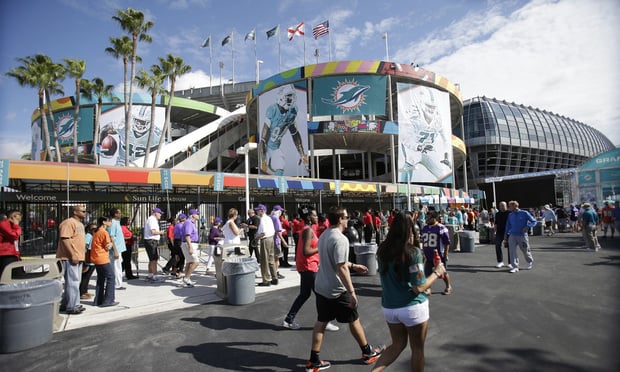 Fans arrive at Sun Life Stadium for an NFL game between the Miami Dolphins and the Minnesota Vikings. (Photo: Associated Press)
Fans arrive at Sun Life Stadium for an NFL game between the Miami Dolphins and the Minnesota Vikings. (Photo: Associated Press)
NFL stadiums could see as much as $11 billion in cumulative losses due to flooding, wildfires and storm surge by 2050, according to a report from climate risk analysis firm Climate X. Because stadiums are more than sports venues – functioning also as economic and community hubs – the damage could lead to significant costs, higher insurance premiums and economic disruption.
Recommended For You
Want to continue reading?
Become a Free PropertyCasualty360 Digital Reader
Your access to unlimited PropertyCasualty360 content isn’t changing.
Once you are an ALM digital member, you’ll receive:
- Breaking insurance news and analysis, on-site and via our newsletters and custom alerts
- Weekly Insurance Speak podcast featuring exclusive interviews with industry leaders
- Educational webcasts, white papers, and ebooks from industry thought leaders
- Critical converage of the employee benefits and financial advisory markets on our other ALM sites, BenefitsPRO and ThinkAdvisor
Already have an account? Sign In Now
© Touchpoint Markets, All Rights Reserved. Request academic re-use from www.copyright.com. All other uses, submit a request to [email protected]. For more inforrmation visit Asset & Logo Licensing.








